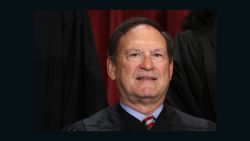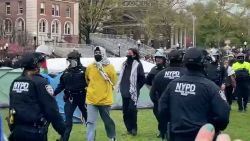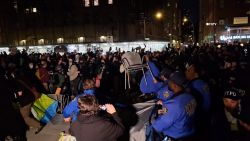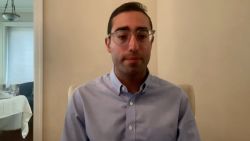The affirmative action case against Harvard brought on behalf of Asian-American students has entered an important second phase, as both sides face December deadlines for final submissions to US District Judge Allison Burroughs.
In the case first filed four years ago this week, the organization Students for Fair Admissions asserts that Harvard intentionally discriminates against Asian-American applicants, partly by giving them lower “personal” scores to lessen their chances of admission. At the root of the scores, the group contends, are stereotypes of Asians as “book-smart” and “one-dimensional,” “not personable.”
Harvard counters that the data evidence, considered at its fullest, reveals no Asian-American bias and that the challengers’ overall claim is “predicated on data-mining” that omits factors showing that Asian-American applicants fare well overall.
Harvard lawyers also argue that the challengers’ larger goal is eliminating racial affirmative action, which has helped African-Americans, Latinos and other traditionally disadvantaged minorities through the years. The closely watched dispute, which both sides believe is headed for the Supreme Court, would affect racial admissions nationwide and how easy – or hard – it is for students of all backgrounds to obtain a place on prestigious campuses.
At Harvard, the percentage of Asian-American students admitted has been steadily increasing, and for the most recently admitted class of 2022 reached about 23%. African-Americans were at about 15% and Latino at 12%. A category of mainly white students accounts for 50%.
Here’s what to watch in upcoming months:
What’s next
After a three-week trial in Boston that ended on November 2, the parties’ respective versions of the salient facts and legal justifications are due December 19. Two groups representing African-American, Hispanic, Native American and Asian-American students siding with Harvard have until January 9 to make their last claims, as do other “friend of the court” groups.
Burroughs has set February 13 for final arguments. She is under no specific deadline for her eventual ruling.
The Department of Justice has filed a “statement of interest” on the side of Students for Fair Admissions, noting that the Trump administration is investigating Harvard’s screening processes after a complaint to the Department of Education from more than 60 Asian-American groups.
Key arguments
Students for Fair Admissions asserts four specific claims under Title VI of the 1964 Civil Rights Act, which prohibits discrimination at schools that receive federal funds: that Harvard holds Asian-Americans to a higher standard than other applicants; that Harvard engages in unlawful racial balancing to keep roughly the same percentage of racial groups; that it uses race not as a lawful “plus factor” but as a defining factor in choosing some students; and that it has bypassed race-neutral options for diversity, such as students’ socioeconomic backgrounds.
“The law is clear,” Students for Fair Admissions lawyer John Hughes said during closing arguments. “Evidence of bias and stereotyping can suffice to show intentional discrimination. This is particularly true in a system like Harvard’s that is not race-neutral.”
As Harvard has denied all claims, the university asserts that the challengers are trying to “turn back the clock” and reverse court-sanctioned racial admissions policies that bring diversity to campus.
“What the evidence has demonstrated is that Harvard has worked over the years tirelessly to create a vibrant educational environment that includes students from all walks of life,” Harvard’s lead trial lawyer, William Lee, said in closing arguments. “We do not admit simply GPAs and board scores. We admit people.”
On appeal
After Burroughs rules, the losing party could appeal to the 1st US Circuit Court of Appeals and then to the US Supreme Court. That process would take several months. A related affirmative-action challenge filed by Students for Fair Admissions is pending against the University of North Carolina at Chapel Hill. Those proceedings are at an earlier stage and no trial has yet been held.
Both cases were engineered by conservative activist Edward Blum, who for years had sought white plaintiffs to challenge affirmative action. Blum has said he ultimately wants reversal of the 1978 Supreme Court milestone that first allowed universities to consider students’ races among many factors but forbade admissions quotas. The Supreme Court has upheld Regents of the University of California v. Bakke over the years, but by only a single vote.
When the Supreme Court last reviewed race-based admissions in higher education, in 2016, Justice Anthony Kennedy cast the decisive vote to endorse a University of Texas at Austin program that considered applicants’ races, among other characteristics. That case had been brought by Abigail Fisher, a white student enlisted by Blum for the lawsuit after she was rejected for admission to the Texas flagship university.
Kennedy, who retired in July, has been succeeded by Justice Brett Kavanaugh, whose record as a lower court judge shows him to be more conservative than Kennedy.
The student perspective
Students for Fair Admissions did not call any Asian-American students to the stand during the three-week trial. Two groups of Harvard students backing the Ivy League university in Cambridge, Massachusetts, had sought to be part of the case, and Burroughs allowed them limited testimony in opening and closing arguments.
Represented by leading civil rights groups, they emphasized that racial affirmative action makes a difference for all students.
“The outcome impacts … the educational environment students will encounter,” said Genevieve Bonadies Torres, of the Lawyers’ Committee for Civil Rights Under Law, during closing arguments. “Diversity is what is at stake in this case.”
Added Cara McClellan, of the NAACP Legal Defense Fund, “During this divisive time for our country, the need for citizen leaders, educated in diverse settings, remains as urgent as ever. … Race remains a visible marker that cannot be ignored.”




















